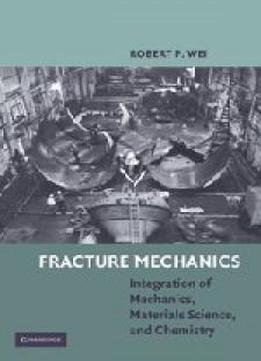
Fracture Mechanics: Integration Of Mechanics, Materials Science And Chemistry
by Robert P. Wei /
2010 / English / PDF
2.4 MB Download
Fracture and "slow" crack growth reflect the response of a material
(i.e., its microstructure) to the conjoint actions of mechanical
and chemical driving forces and are affected by temperature. There
is therefore a need for quantitative understanding and modeling of
the influences of chemical and thermal environments and of
microstructure, in terms of the key internal and external
variables, and for their incorporation into design and
probabilistic implications. This text, which the author has used in
a fracture mechanics course for advanced undergraduate and graduate
students, is based on the work of the author's Lehigh University
team whose integrative research combined fracture mechanics,
surface and electrochemistry, materials science, and probability
and statistics to address a range of fracture safety and durability
issues on aluminum, ferrous, nickel, and titanium alloys and
ceramics. Examples from this research are included to highlight the
approach and applicability of the findings in practical durability
and reliability problems.
Fracture and "slow" crack growth reflect the response of a material
(i.e., its microstructure) to the conjoint actions of mechanical
and chemical driving forces and are affected by temperature. There
is therefore a need for quantitative understanding and modeling of
the influences of chemical and thermal environments and of
microstructure, in terms of the key internal and external
variables, and for their incorporation into design and
probabilistic implications. This text, which the author has used in
a fracture mechanics course for advanced undergraduate and graduate
students, is based on the work of the author's Lehigh University
team whose integrative research combined fracture mechanics,
surface and electrochemistry, materials science, and probability
and statistics to address a range of fracture safety and durability
issues on aluminum, ferrous, nickel, and titanium alloys and
ceramics. Examples from this research are included to highlight the
approach and applicability of the findings in practical durability
and reliability problems.











